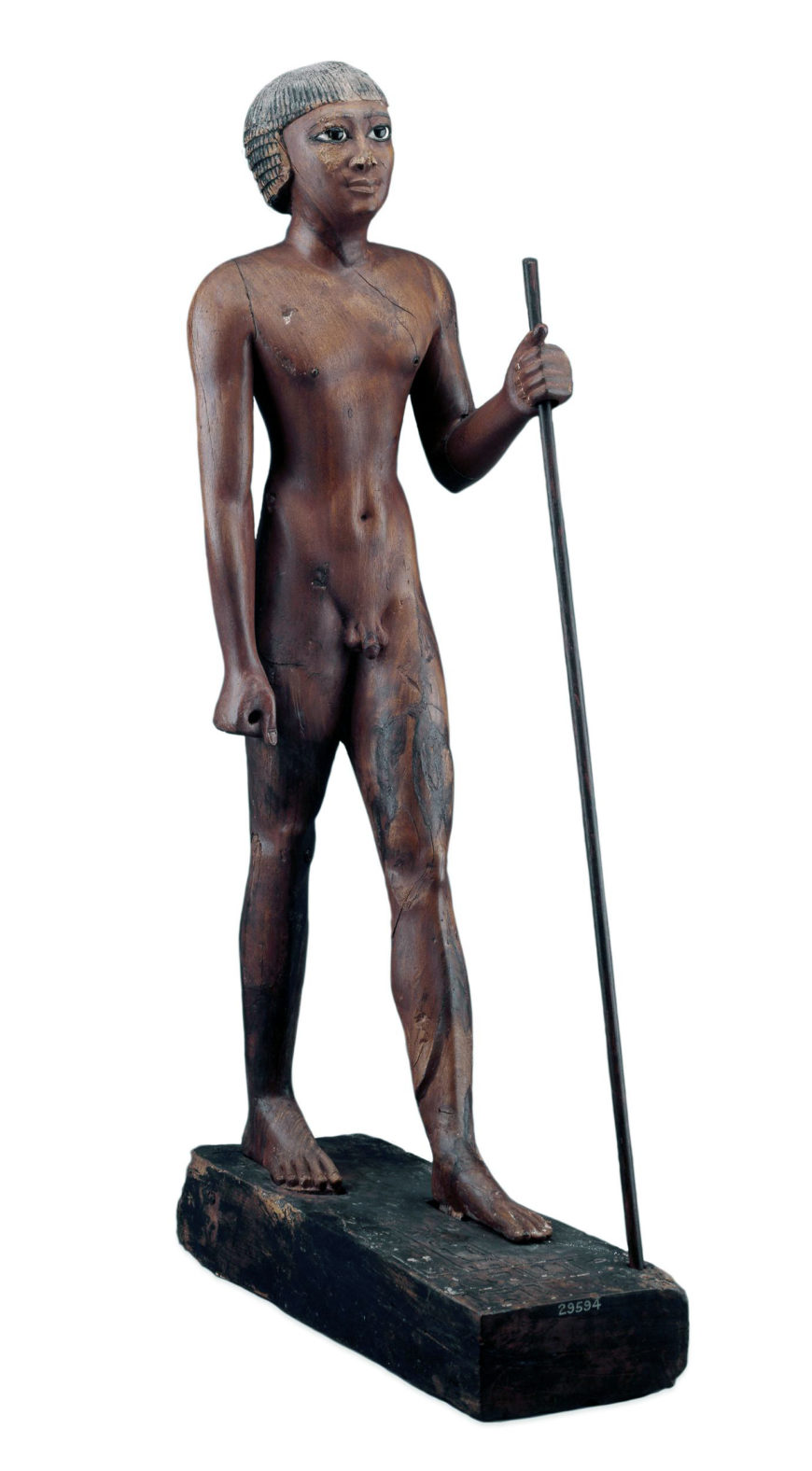
Nude figure of the Seal Bearer Tjetji, 2321 B.C.E.–2184 B.C.E. (6th Dynasty), from Akhmim, Upper Egypt, wood, obsidian, limestone, and copper, 75 cm high (© Trustees of the British Museum)
Tjeti must have been both important and wealthy to have commissioned this statue. While wooden tomb statues are usually carved in a manner that is almost crude, the sculptor of this example has carefully modeled the muscles on the torso and legs, and paid close attention to the detail of the face. Fine wood was scarce and expensive in Egypt so the statue was not carved from a single block. Instead, the arms were made separately and pegged onto the body which in turn was set into a separate base. The figure was once fully painted, and the eyes are inlaid with white limestone and obsidian set in copper frames.
Tjeti is shown in the classic pose of a standing official, holding a staff (not original) and a scepter (now lost). However, he is naked, a way of portraying tomb owners which only occurred during the second half of the Old Kingdom (2613–2160 B.C.E.). Clothing was an important indicator of status and profession and so to be depicted naked normally reflects a low status. Tjeti’s names and titles inscribed on the base show that he held a high administrative rank so it is possible that his nakedness might symbolize youth through rebirth. This may have been a short-lived fashion for statues of very high officials.
© The Trustees of the British Museum

